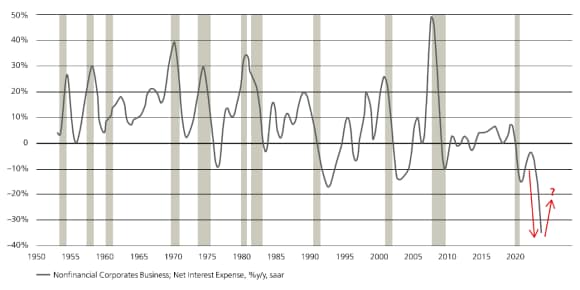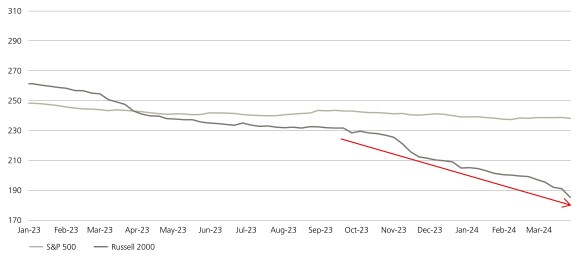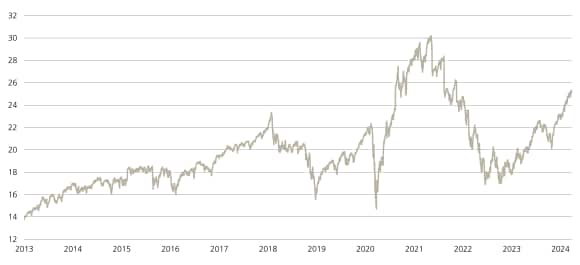Q2 2024 equity market outlook
Three charts on equity markets

Despite the sharp rise in interest rates, large corporates have surprisingly benefitted from falling net interest expenses.
Large corporations benefitted from the sharp interest rate rise
Large corporations benefitted from the sharp interest rate rise

Firstly, the sharp rise in overnight interest rates allowed companies to earn interest from their cash/working capital.
Secondly, post Covid, the low interest rate environment allowed large businesses with strong credit ratings to refinance at lower rates, with many bonds maturing after 2025 and resulting in limited higher interest payments.
Companies’ net cash balances also benefitted from income due to rising rates.
In comparison, smaller companies tend not to have credit ratings and are more exposed to bank loans which are quicker to pass on the real cost of borrowing. This partially explains the wide earnings gap between large and small caps.
Profit sentiment remains stable for large caps, but worsens for small caps
Profit sentiment remains stable for large caps, but worsens for small caps

Equity markets continue to rise as they did in 2023, posting strong gains in Q1 2024. Without earnings growth, the P/E multiple has expanded further, driven by future earnings expectations and AI driven productivity gains. Such hopes are now well baked into valuations.
US equity market continues to rise on multiple expansion
US equity market continues to rise on multiple expansion

Make an inquiry
Fill in an inquiry form and leave your details – we’ll be back in touch.
Introducing our leadership team
Meet the members of the team responsible for UBS Asset Management’s strategic direction.

